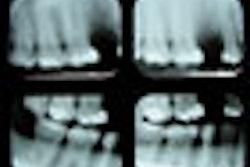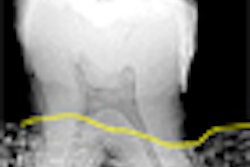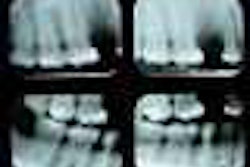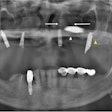Suppose a patient sues you. In trial, the patient's lawyer produces x-rays showing your mistake -- let's say a periapical lesion caused by coronal leakage. You know you did a good job on the crown, so how did this happen?
Maybe you're not as skilled as you thought. Or maybe it's Photoshop.
As digital x-rays become more common, new concerns are rising about the ability to use photo editing software and other techniques to alter x-rays or even CT scans.
In a review article being published by the Journal of Endodontics (JOE), researchers from the University of Ghent, Belgium, summarize several studies showing how convincingly digital x-rays can be manipulated. The article doesn't cite any actual incidents of fraud, but outlines the potential.
"A few years ago, creating a convincingly altered digital image required the efforts of a specialist using sophisticated equipment," the authors write, "but nowadays it can be easily accomplished by anyone with a personal computer." They note that medical fraud makes up 10 percent of all fraud cases in the United States, and argue that the risk of tampering is a major disadvantage of digital x-rays.
When a radiograph is exported from dental software programs, it may be stored in a format that can be opened by Photoshop or a similar program. Of course, as the authors admit, a scanned image of film x-rays can also fall prey to such manipulation.
In fact, a 1999 study published in the Journal of the American Dental Association showed that insurance companies could be fooled this way. Researchers created the appearance of carious lesions, large restorations, fractures and periapical inflammation and submitted claims for treatment. The insurance companies approved compensation in every single case.
Darkroom techniques -- even as simple as exposing or underexposing -- can alter film enough to change the appearance of a disease. "There's no way of knowing that the image has been touched up, and there never has been," says Allan Farman, B.D.S., M.B.A., Ph.D., D.Sc., a professor at the University of Louisville and president elect of the American Academy of Oral and Maxillofacial Radiology. So he doesn't think tampering is a particular problem of the digital age.
And digital equipment makers are hard at work on anti-fraud technology. Among the most promising are digital watermarks -- code embedded into the image that is invisible to the viewer but can be detected by the equipment which will note any changes from the original.
Some equipment already comes with some security measures, the JOE authors write, but most can be outwitted by sophisticated technicians. And these measures have not yet been standardized so that images can be sent securely among machines made by different manufacturers.
So what does this mean to the dentist? In the normal course of dentistry, no one has incentive to tamper with an x-ray. But, the authors write, "alertness and awareness are recommended when digital radiographs are used in any context such as damage claims, medical evidence material, forensic dentistry, presentations, publications, or insurance cases."



















